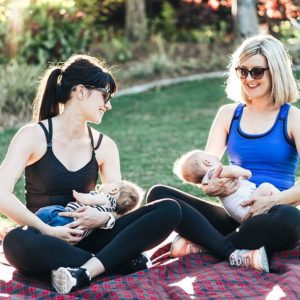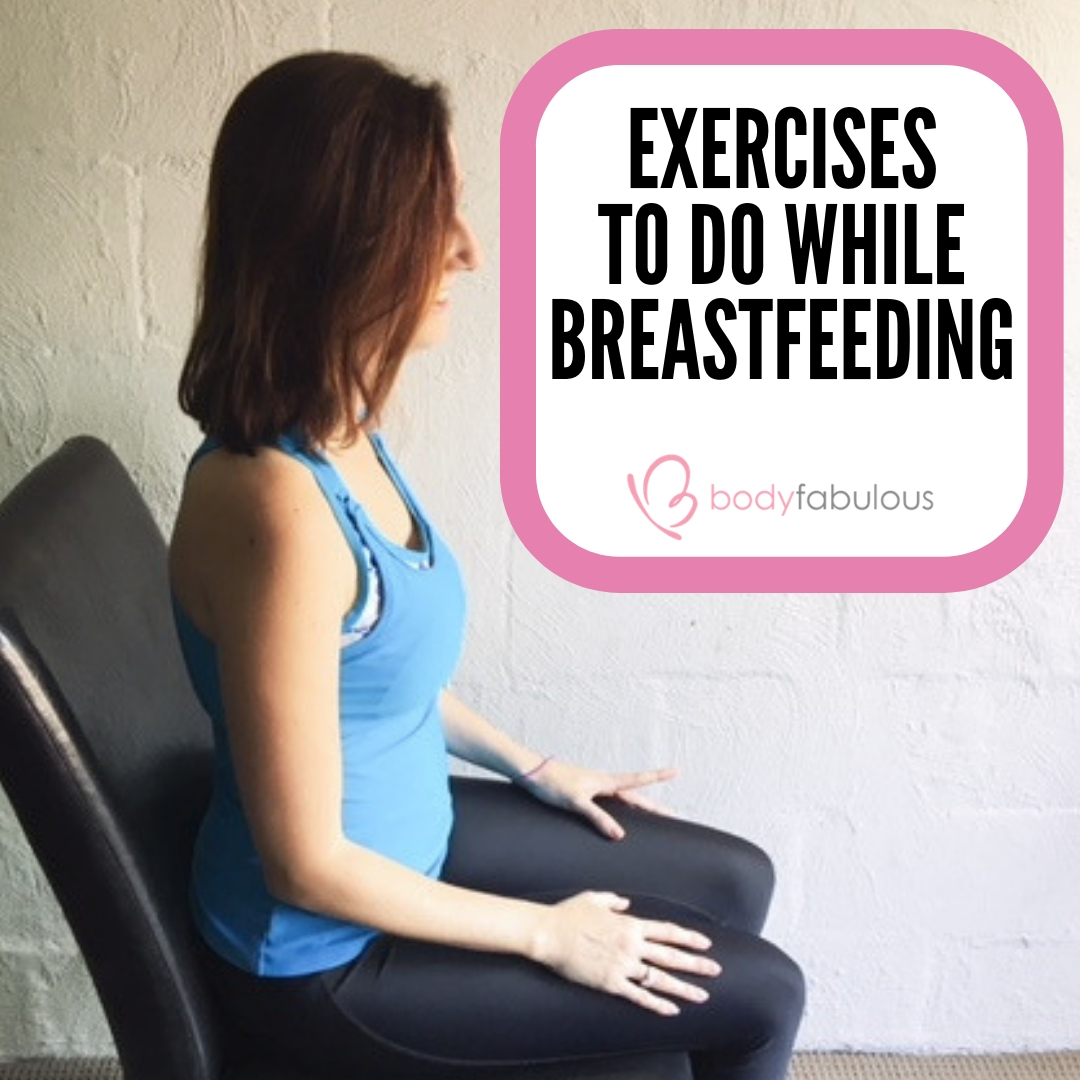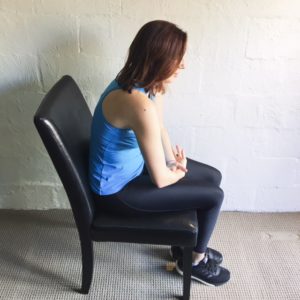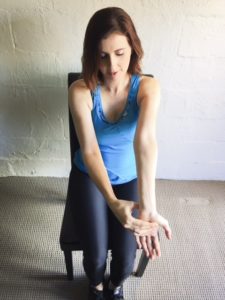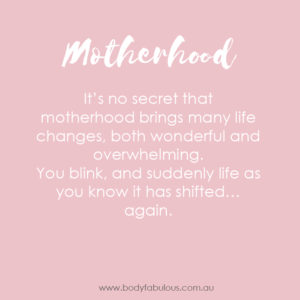Trying to work out when you can return to exercise post birth can be challenging. It can be even more tricky if you are breastfeeding. With the additional challenges of inconsistent feeding times, potential leaking breasts and trying to find comfortable and functional activewear !
Here are a few tips to take care of your health and your baby’s well-being post-birth :
Remember, just because your Dr/OB/Midwife gives you the “all clear” to exercise at 6-8 weeks postpartum it doesn’t mean you are fully healed internally and you can jump into an intense activity regime.
Easing into a workout program is essential for any new Mum. Your body has just been through an incredible transformation during pregnancy and your hormones are still doing some major adjusting post birth. This means your priority is healing from the inside out and learning to pay attention to your pelvic floor, core re-activation, joint pain, tight muscles and postural changes.
Let’s focus on some exercises you can literally do while you are breastfeeding or nursing your baby – that’s right multi-tasking mama !
You can also view these exercises as a LIVE replay on my Facebook page here.
These exercises are safe to do from 4 weeks post birth if you have no complications. Please check with your medical practitioner first.
Firstly, make sure you have a comfortable and supportive chair, prop a pillow behind your lower back and if possible support your baby with a breastfeeding pillow ….
Let’s start with …
Postural Alignment
With all my pregnant and postnatal clients, I constantly cue and manipulate their alignment, so they achieve better functional movement. It is important, as when your posture is aligned your core will work effectively with every daily movement. Being a mother is busy, there is a lot of 24/7 movement so it is important you become aware of how to “stack your posture” which will, in turn, improve your core healing process.
Let’s do this while you are feeding…
Sit tall both feet on the ground, relax your shoulders away from your ears. Now check that your shoulders aren’t con-caving forward, they should be stacked over your hips (this can be tricky while feeding so also try this post feed), soften through your belly and check you aren’t clenching your jaw or holding any other pocket areas of tension.
Check out the image below of Melita from Mammojo demonstrating fantastic posture in the image below.
Just sit and breath in this above position, even better if you can see your self in a mirror get a good visual image of how this looks.
As you go about your other daily activities, try to come back to this “stacked” posture (shoulders over ribs) when standing and sitting. It can be challenging, especially as you are doing many anterior /front movements including bending over change tables, prams, cots etc.
It is important to come back to this re-alignment to avoid too much strain on your posterior. So please try to avoid the concaved posture below. Your lower back and core will thank you!
Diaphragmatic Breathing
Check your shoulders are away from your ears, feet even on the ground and posture “stacked” as we just reviewed. Simply start to close your eyes as you are feeding and focus on your breath.
Slow your breath down 4 counts in and 4 counts out, ensuring you are drawing your breath down to your belly, ribs expanding then slowly exhaling. These deep long breaths are going to nourish your core and help to reactivate your core and pelvic floor. Without you actually consciously feeling it, on your exhale your pelvic floor rises naturally. Let this happen without clenching or sucking your belly in. Tapping into your breath also lowers your cortisol levels which is an essential part of fat loss postpartum. So bring this awareness of breath into your daily activities check if you are not breathing into your throat/chest, instead draw that breath down further into your belly.
Pelvic Floor Activation
Now we all know we have to do our Pelvic Floor exercises post birth…but who really does them? The perfect time is while you are feeding your baby. So stop scrolling on your mobile phone and try this….
Ensure your shoulders are positioned over your ribs and feet flat on the floor. Take a deep breath in and as you exhale, I want you to feel like you are internally and very gently picking up a blueberry with your pelvic floor. Then as you inhale slowly release the blueberry.
Say what? Blueberry with my private parts ?…
Yes! I use the blueberry analogy as you don’t want to squash it. This is a very gentle and effective way to reactivate your pelvic floor. Your pelvic floor is the foundation of your core so this muscle needs to function correctly (dysfunction comes if it is too tight or your try to clench). If your pelvic floor heals effectively you will also find your diastasis recti (ab separation) heals much better too.
Using a visualisation is also very helpful as we are trying to re-connect the neural pathways from your brain to this deep muscle group. This is all part of you healing not only physically but also mentally.
Neck Stretch
One of the biggest complaints I hear from many new mum’s is about neck pain. Much of this comes from postural strain due to misalignment as we covered above. However, sometimes this pain is hard to avoid as you are simply exhausted and your muscles become tighter as the hormone relaxin leaves your system.
Let’s try to release and prevent neck pain …
Come back to your “stacked posture” then simply drop your head to the side your baby is feeding on, and extend your arm long on the opposite side. Don’t strain, just allow gravity to do its thing and check your breath is long and diaphragmatic. Come back to center then repeat. Or do this on the other side when your baby feeds on the other side.
We are trying to lengthen your muscles so double check you don’t clench your jaw or curl your toes while doing this.
Wrist and Ankle mobility
Are your joints feeling a bit “crunchy” post birth? Again, this is pretty normal as you had lax joints fully of the hormone relaxin during pregnancy and this is starting to leave your system.
It does take up to 12 months for the hormone relaxin to fully leave your body post birth so please remember you are still very prone to strains and sprains.
To improve your joint mobility let’s try this while feeding…
Sit in your “stacked posture” and simply pick up 1 foot and circle the ankle, slowly as you breathe deeply, then simply circle the foot the other way. Do this with the other leg – slow breath, slow circles.
Then try this with your wrists, long slow circles in time with your breath on both sides. Repeat again – both ankles and wrists. This simple mobility exercise will also improve your circulation too.
Other points to consider
- Contrary to popular beliefs exercise during breastfeeding does not affect milk supply.
- Effective nutrition is what is going to ensure you have a good supply of milk. As a breastfeeding mum, you expend a considerable amount of calories (anywhere between 380 and 600 a day) so it’s essential to replace those calories a nutrient dense diet, even more so if you are embarking on an exercise program. Here is an evidence-based nutrition guideline book I highly recommend for during and after pregnancy.
- If you embark on very intensive exercise (ie running a marathon) It may slightly change the taste of your milk to due lactic acid build up in your system. But as previously mentioned we don’t recommend vigorous exercise in your first 12 months post birth so this is pretty uncommon. Read my tips here.
- Stay hydrated – water consumption is essential for your energy levels and to keep your milk supply up.
- Self Care – A brand new baby is a priority for any new Mum. But don’t forget the importance of self-care in the middle of this major life shift.
Simply start with some of these simple exercises to help you to feel better both mentally and physically.
I also highly recommend that as you progress from these exercises, you see a Women’s Health Physio around 10 -12 weeks postpartum, so they can assess your internal healing and guide you on your next steps for an effective return exercise.
If you have any questions please contact me. You can also view these exercises as a LIVE replay on my Facebook page here.
xx
P.S. Get your free guide to 25 Free Pregnancy & Postpartum Snacks here. Perfect for breastfeeding mums.
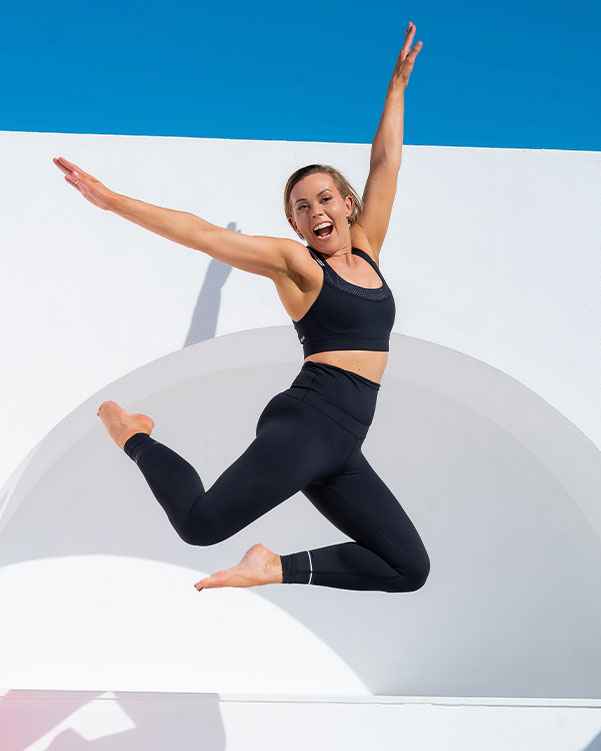
About Dahlas
Dahlas Fletcher is one of Australia’s most respected and successful certified and experienced Pregnancy and Female Fitness Trainers. Her goal is to help you be the happiest, most fabulous version of yourself, inside and out.



